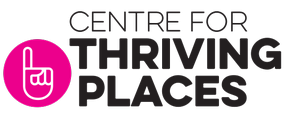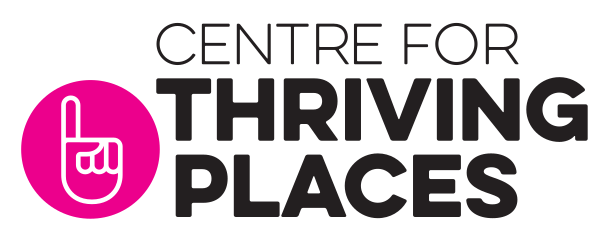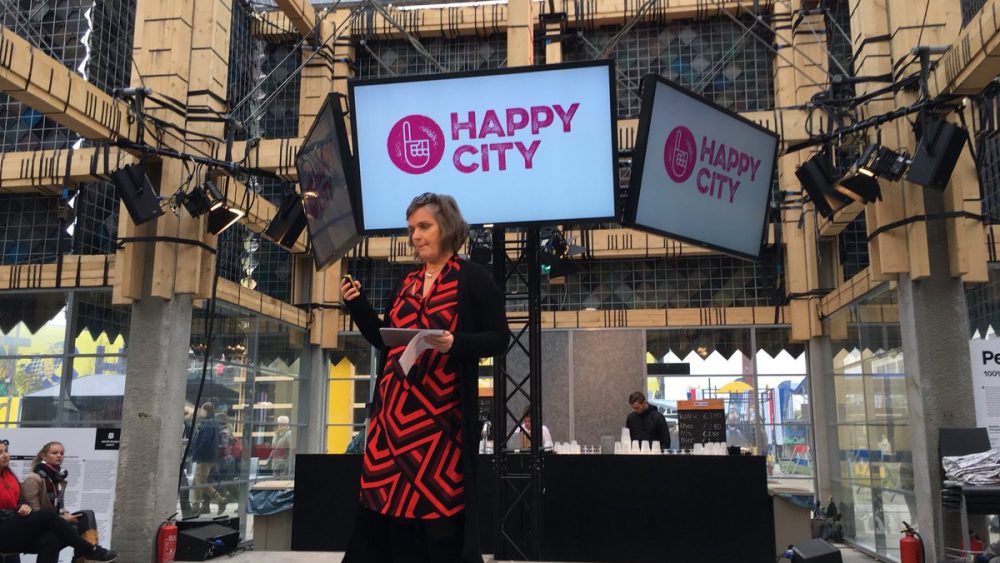For many years now I have been invited to ‘smart city’ meetings, conferences and events. We are told we all need to use ‘open data’ the ‘internet of things’ and ‘smart city infrastructure’ to solve everything from traffic jams to crime, poverty to climate change. It seems there must be a ‘smart’ technological solution to everything.
While there has been much to celebrate in this movement, (who, after all, wants to live in anything but a smart city?) I have always had some nagging doubts about the process. So when I was invited to speak at an event for Dutch Design Week, about ‘From Smart City to Happy City’ I was wary. Was this another event suggesting that Smart Cities ideas had all the answers, but this time not to air pollution but to happiness? If so, I was not sure it was for me.
As it happens, I was wrong, and I spent a chunk of last week in Eindhoven with an inspiring group of people, from big business to micro social enterprise, from deputy mayors to designers, from advisors to the G40 to students starting out. All exploring one thing – how can our collective desire for a happier life drive our use of supportive technology, rather than the other way around?
Led by the intrepid duo of Rob Adams from Dutch design company Six Fingers, and Boyd Cohen, a dynamic American based in Barcelona, who are collectively creating ‘Happy Citizen Design‘, the event looked at the evolution of the Smart Cities approach. Smart City thinking started (and in some places stopped) in the ‘technology first’ camp. Incredible sums have been spent on developing technological infrastructure to connect and use data in previously unimaginable ways to fix problems that may or may not be priorities for those they are designed to support. It is a classic model that says ‘innovate a solution and then find a problem that fits’.
But this event in Eindhoven, part of the exciting Dutch Design Week in the city, was aligned with a shift to a newer form of smart city. It may be the first iteration of the concept where the word technology does not even figure in the headlines. This is an approach that takes much more from design principles than it does from traditional tech innovation models, helping communities use the best of the creative process to make really ‘smart’ design. It starts with a different set of questions: What sort of city do we want? What conditions help us all to truly thrive? What stands in the way of those conditions proliferating and how can technology help?
Those are questions I can get excited about.
We heard from Aarhus in Denmark about how community co-creation principles are driving decisions on ‘smart’ use of public spaces. Barcelona is exploring ways to radically change urban neighbourhoods to be people-led rather than car dominated. Bragança in Portugal is seeking smarter ways to tackle the brain-drain so common in smaller cities. While Paris, at the other end of the size spectrum, wants to help empower citizens to play an active part in their world-leading work on climate change – using technology to reverse the current top-down approach. Finally Bristol and Eindhoven, both magnets for design and innovation talent, shared a passion for changing the narrative, away from a consumption growth model of city ‘progress’ and towards one that focuses resources, innovation and technology towards creating the conditions for happier, more connected citizens.
That’s what I call smart, and clever!
Watch this space for collaboration between those present, taking this approach across Europe and beyond. Let’s use technology and design processes to support consistent collaborative change for happier cities and citizens, starting where people are, not where politicians or tech wizards think they should be.
Liz Zeidler, chief executive, Happy City



Comments are closed.